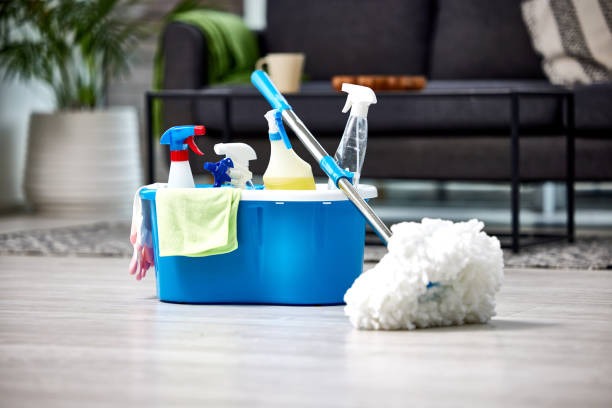Introduction
Housekeeping refers to the practice of maintaining cleanliness, organization, and tidiness in various settings, such as residential homes, commercial establishments, and hospitality facilities. It involves regular cleaning, organizing possessions, and ensuring a neat presentation of spaces. Housekeeping is crucial for creating a pleasant and hygienic environment, contributing to improved health, safety, and overall well-being.
Key Elements of Housekeeping
A. Cleaning
1. Regular cleaning routines: Daily and weekly cleaning tasks, including dusting, sweeping, mopping, and vacuuming, ensure that dirt and germs are promptly removed.
2. Deep cleaning practices: Periodic deep cleaning, involving thorough scrubbing and disinfecting, targets hard-to-reach areas and maintains a high level of cleanliness.
3. Maintenance of cleanliness standards: Establishing and adhering to cleanliness guidelines help sustain a consistently clean environment.
B. Organizing
1. Clutter management: Removing unnecessary items and organizing belongings create a more visually appealing and functional space.
2. Efficient space utilization: Proper organization maximizes available space and helps in finding items easily, promoting productivity and convenience.
C. Tidying
1. Keeping things in order: Regularly arranging and straightening items maintain an orderly appearance throughout the day.
2. Neat presentation of objects and spaces: A well-maintained and aesthetically pleasing environment fosters a positive atmosphere.
Benefits of Housekeeping

A. Health and Safety
1. Reduction of allergens and pollutants: Regular cleaning and dusting reduce allergens like dust mites, pet dander, and pollen, enhancing indoor air quality.
2. Prevention of accidents and injuries: A clutter-free environment minimizes the risk of tripping or falling hazards.
B. Improved Indoor Air Quality
1. Removal of dust, mold, and other airborne particles: Regular cleaning prevents the buildup of dust and mold, contributing to better air quality.
2. Enhanced respiratory health: Cleaner air reduces the risk of respiratory issues and allergies.
C. Enhanced Productivity
1. Clear and organized workspace: A tidy workspace enables better focus and productivity by reducing distractions.
2. Time-saving due to easy access to items and resources: Well-organized spaces save time otherwise wasted searching for things.
D. Positive Mental and Emotional Impact
1. Reduced stress and anxiety in clean and clutter-free environments: A tidy space promotes a sense of calm and relaxation.
2. Improved overall well-being and mood: A clean and pleasant environment positively impacts mental health and emotional well-being.
E. Impressions and Reputation
1. Positive impressions on guests and visitors: Clean and well-maintained spaces leave a positive impression on those who visit.
2. Establishing a reputable image for businesses and organizations: Good housekeeping reflects professionalism and attention to detail.
F. Preservation of Assets and Belongings
1. Prolonging the lifespan of furniture, equipment, and other possessions: Regular cleaning and maintenance prevent premature wear and tear.
2. Preventing damage from neglect and dirt buildup: Proper housekeeping safeguards items from damage caused by neglect or dirt accumulation.
Housekeeping Techniques and Best Practices
A. Cleaning and Sanitizing Methods
1. Proper use of cleaning agents and equipment: Understanding how to use cleaning products safely and effectively ensures optimal results.
2. Adherence to safety guidelines: Following safety protocols during cleaning tasks minimizes the risk of accidents or chemical exposure.
B. Organization Strategies
1. Decluttering tips: Techniques to declutter spaces and keep possessions organized.
2. Utilizing storage solutions effectively: Using storage units, shelves, and containers optimizes space and keeps items in order.
C. Time Management
1. Creating cleaning schedules: Establishing a cleaning routine helps maintain consistent cleanliness.
2. Balancing regular tasks with periodic deep cleaning: Combining daily tasks with periodic deep cleaning ensures comprehensive maintenance.
Housekeeping in Different Settings
A. Residential Housekeeping
1. Importance of maintaining a clean home environment: How housekeeping contributes to a comfortable and healthy home life.
2. Practical housekeeping tips for homeowners: Suggestions for effective home cleaning and organization.
B. Commercial Housekeeping
1. Impact of housekeeping on customer satisfaction: How clean and organized commercial spaces influence customers’ perceptions.
2. Ensuring cleanliness in offices and workplaces: Strategies for maintaining a clean and productive work environment.
C. Hospitality Housekeeping
1. Maintaining cleanliness in hotels, resorts, and vacation rentals: The significance of housekeeping in the hospitality industry.
2. Meeting guest expectations and standards: Ensuring high cleanliness standards to meet guest expectations.
Conclusion
In conclusion, housekeeping plays a pivotal role in maintaining clean, organized, and safe environments. Its benefits span from improved health and productivity to positive emotional impacts and enhanced reputations. By implementing effective housekeeping techniques and best practices, individuals and organizations can create a welcoming and healthy space for themselves and their guests.
